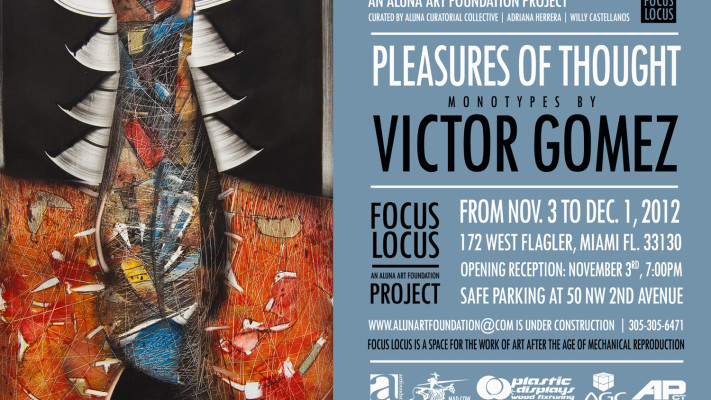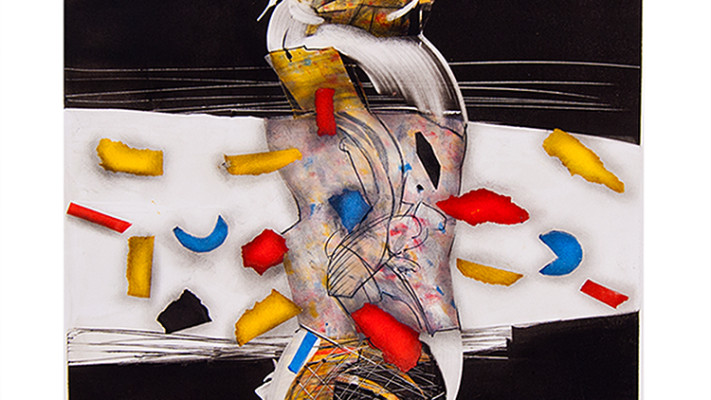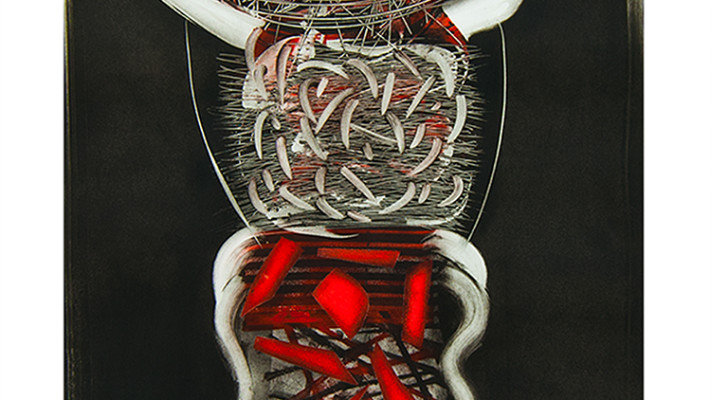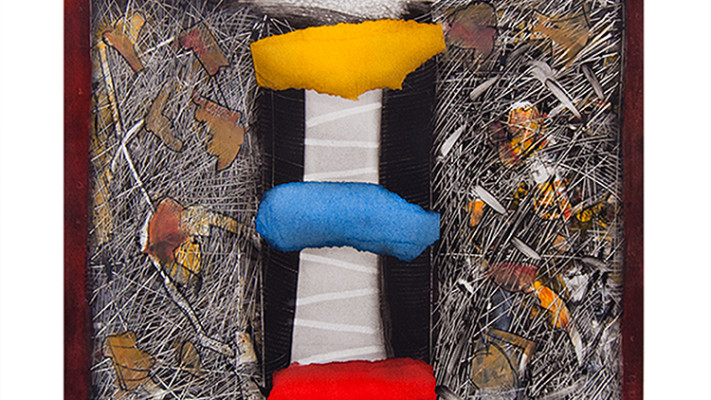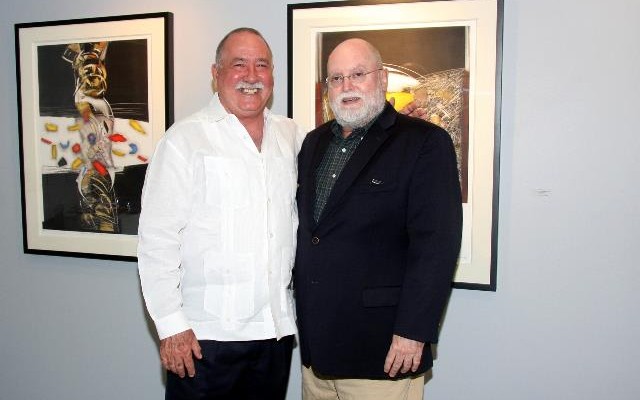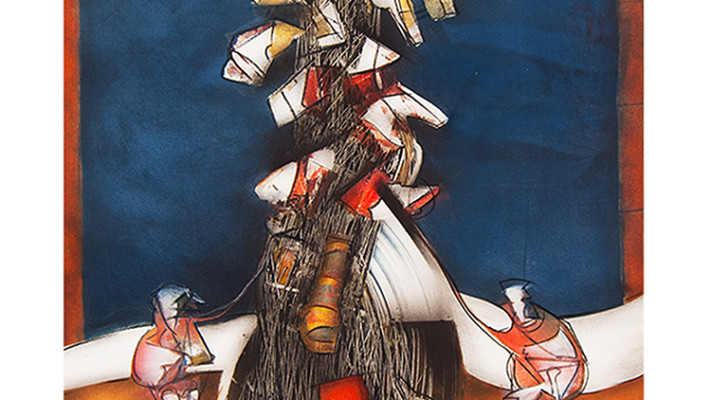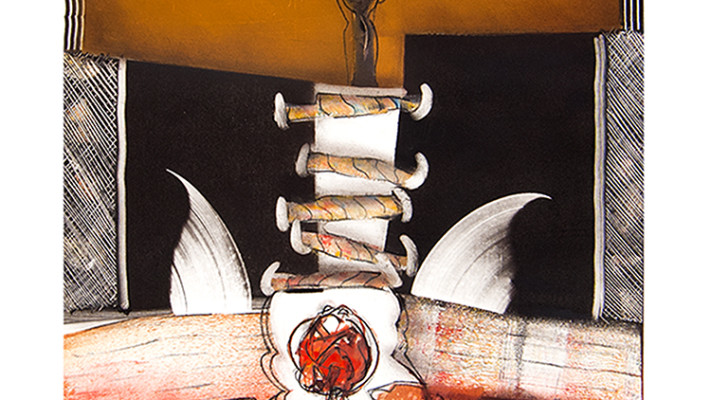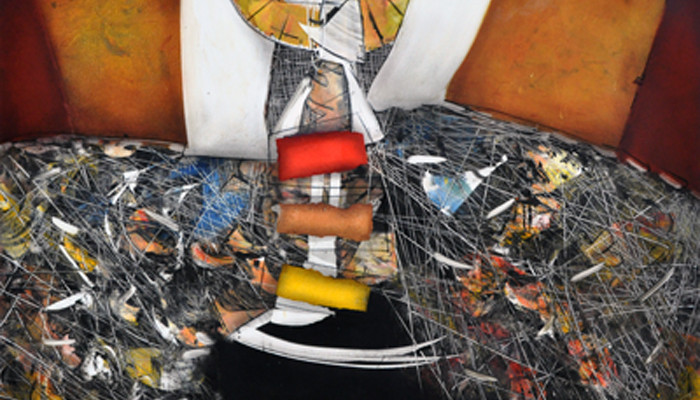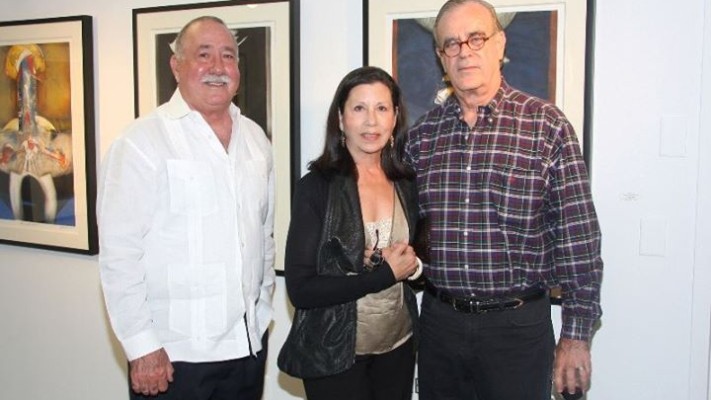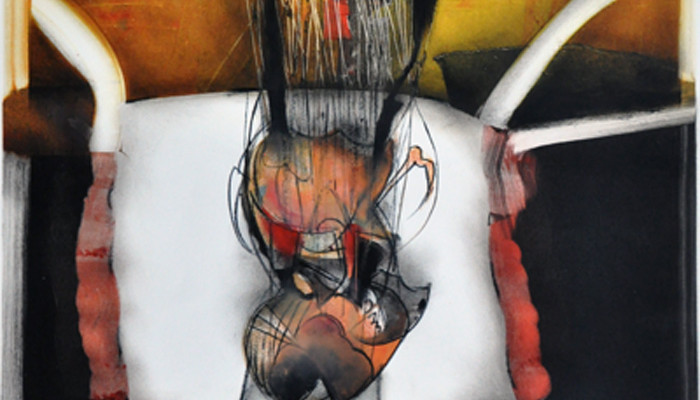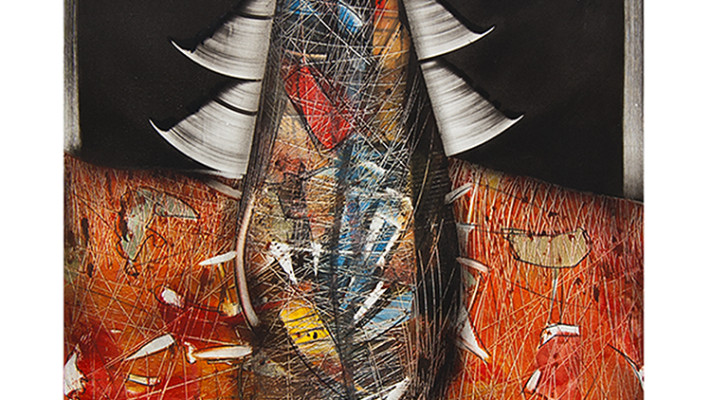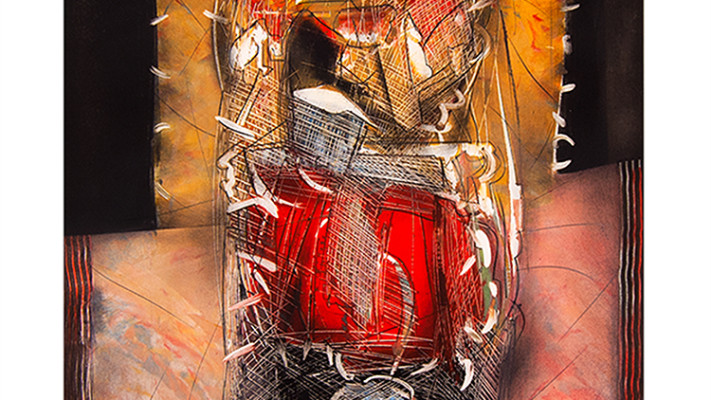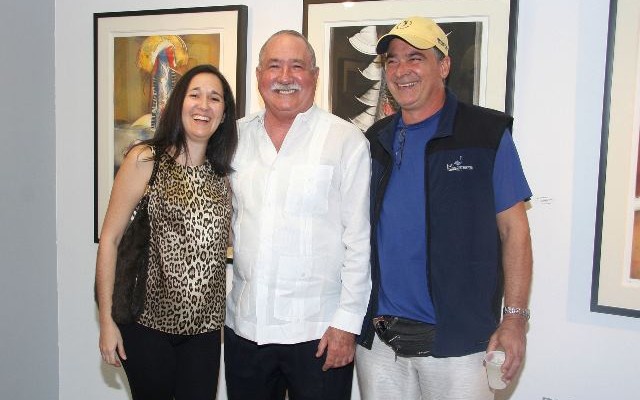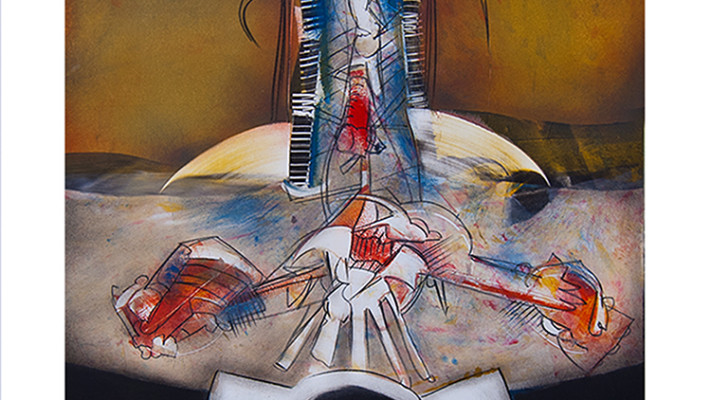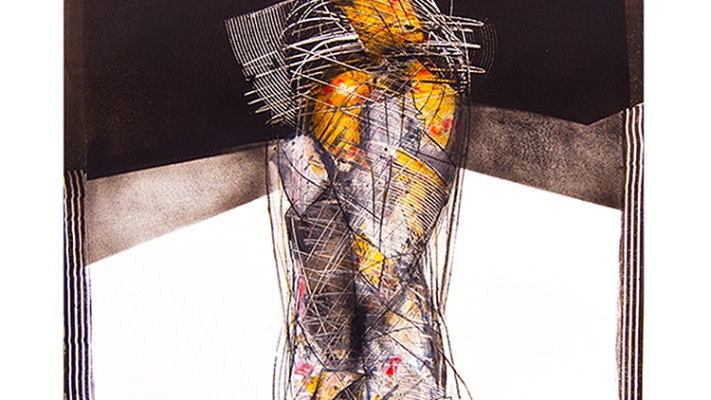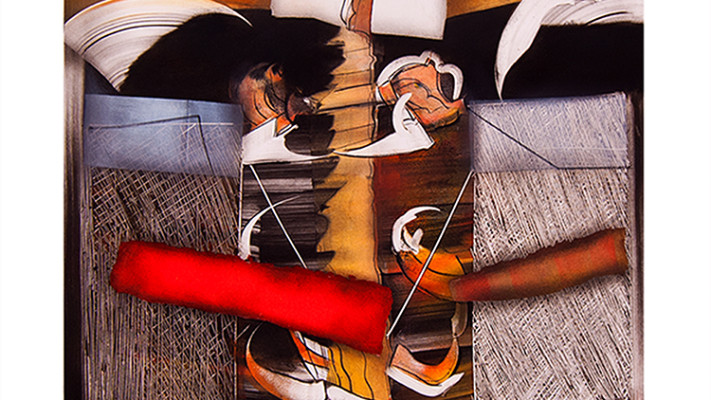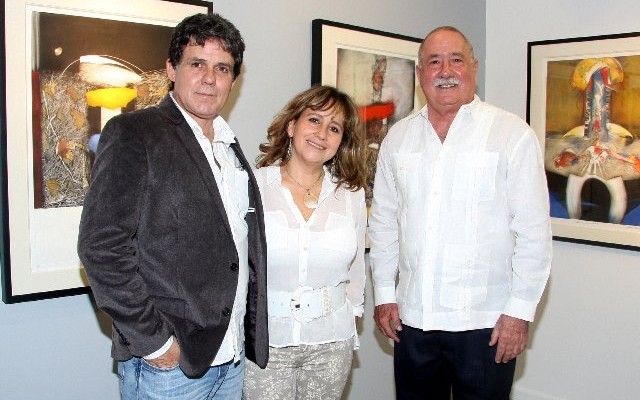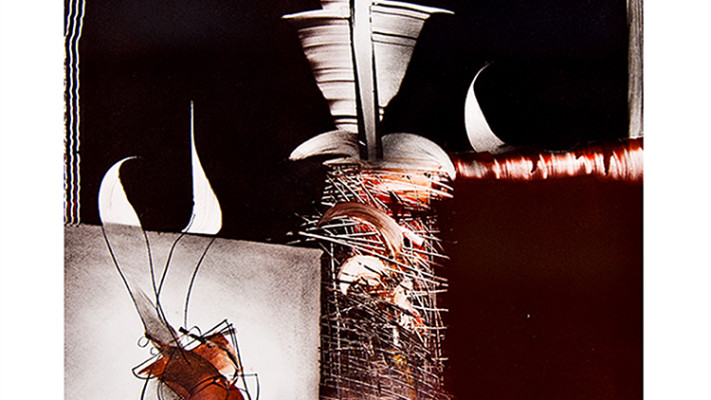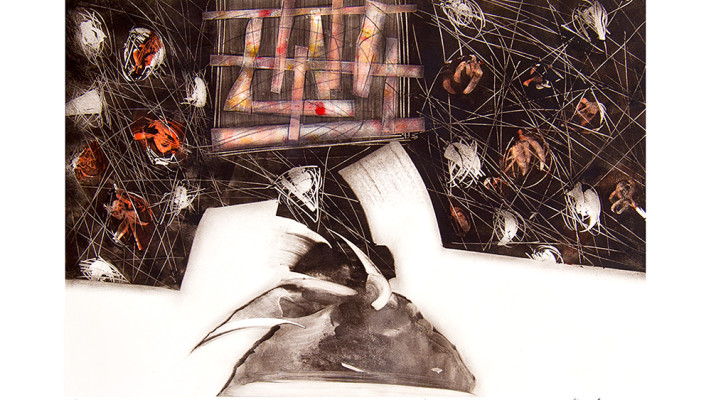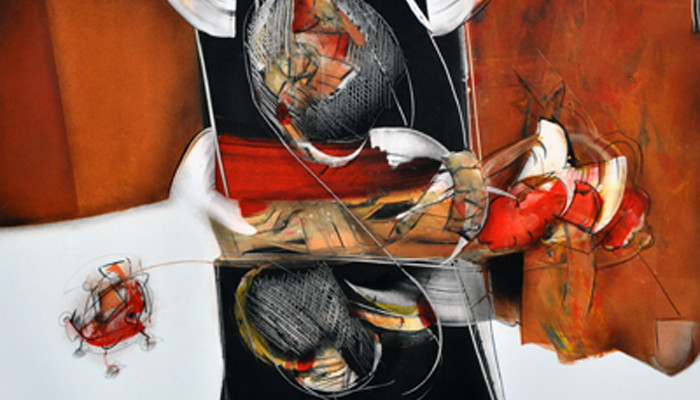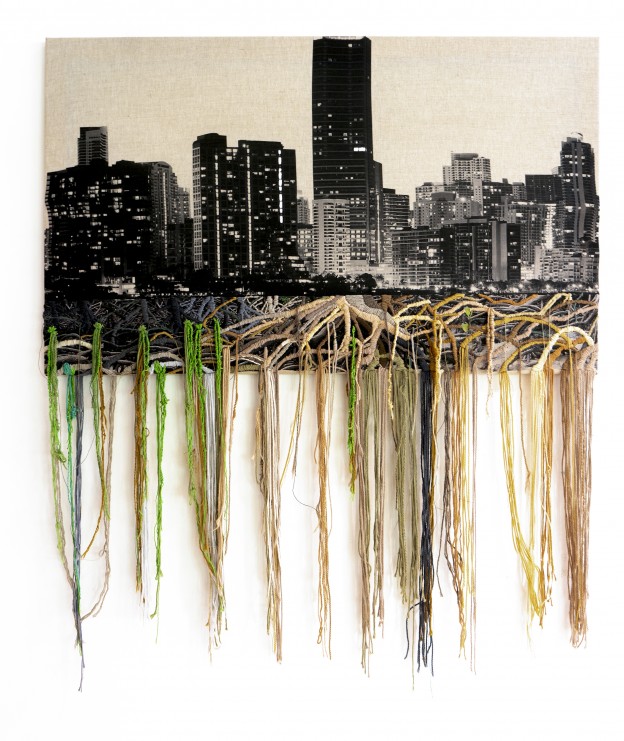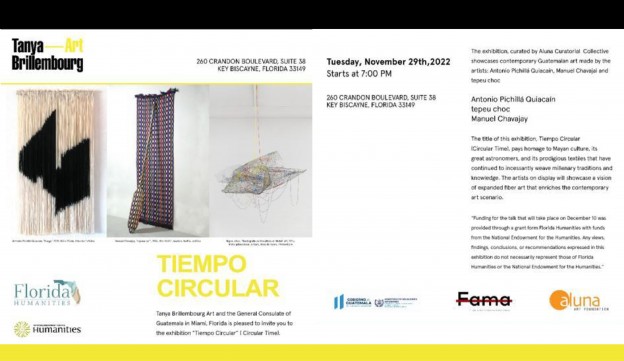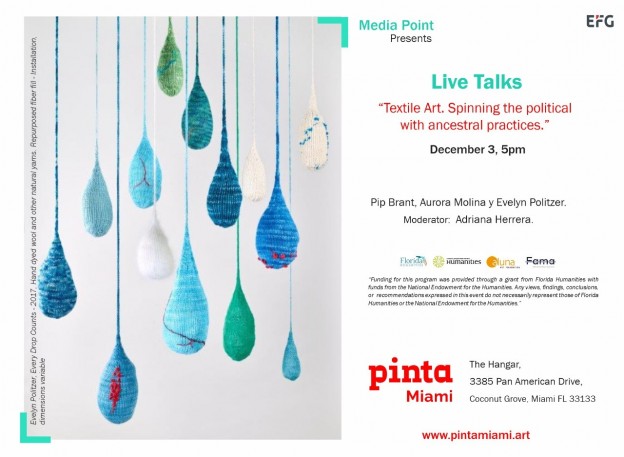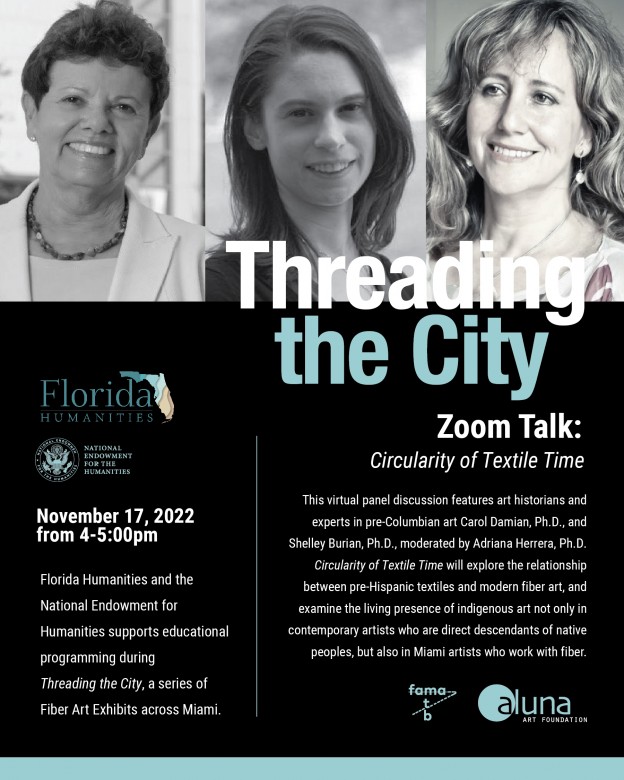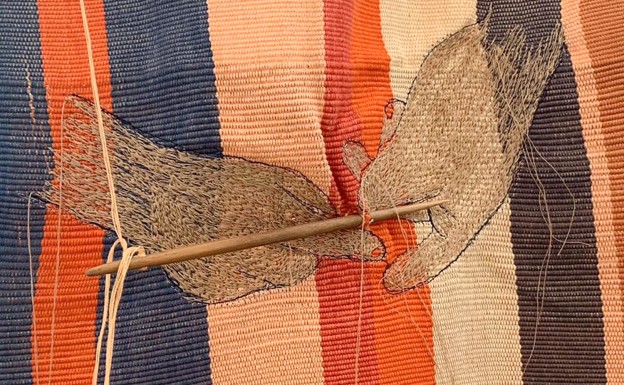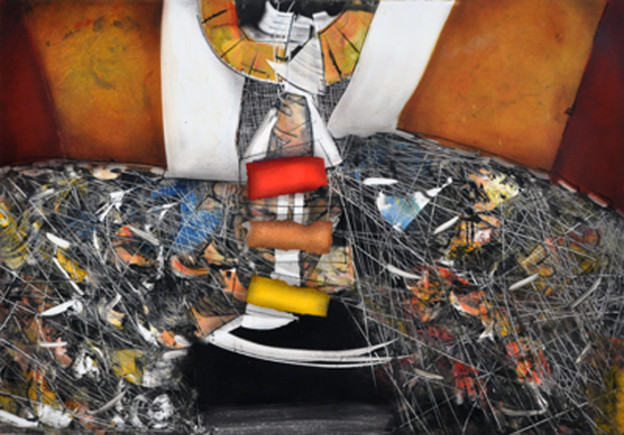
Pleasures of Thought
“Pleasures of Thought” | Monotypes by Víctor Gómez
Curated by Aluna Curatorial Collective
From November 3rd to Dec 1st, 2012, at Aluna Art Foundation
Víctor Gómez: Meditation on the Happenings of the Form
By Adriana Herrera
The difficulty and the interest associated to the work of Víctor Gómez reside in the nature of his choice of an atypical modality of printmaking – which is as old as the invention of paper -: monotype, that merely produces a one-of-a-kind print; hence its name. He is the only Cuban artist who has adopted this most particular technique for image reproduction as his permanent means of expression, thus situating his entire body of work in a hybrid territory, which usually generates reticence among the practitioners of traditional printmaking forms.
Notwithstanding this, the diligence with which he has perfected his art has enabled him to participate in three editions of the Guanlan International Print Biennial Competition, Shenzhen District, China (2007, 2009, 2011), and live as an artist-in-residence, working at the Biennial´s printmaking studio in May, 2012. This experience gave rise to his series “Placeres del pensamiento” (Pleasures of the Mind), comprised of approximately 40 monotypes that reveal a pivotal point in this artist’s long search for a medium situated midway between painting and graphic art: the invention of a language through which to create worlds.
In his case, the notion behind “Placeres de la mente” deviates from the conceptual effort made by artists like Liliana Porter or Luis Camnitzer to insert printmaking in contemporary art practices associated to reproduction and circulation. His interest is focused on meditation on the dynamic development of forms, a sort of happenings of the shape.
The undeniable “retinal pleasure” that his monotypes may produce does not originate in the mimesis of any kind of reality, although some details suggest figurative associations. Instead, it has its source in the delight produced by the formal dynamics that he unleashes on the paper: the intersection and superposition of color planes as a scenographical framework for that cascade of blots, lines and figures endowed with a rare organic quality, as if they were the inhabitants of nascent symmetries.
His “Placeres del pensamiento” (Pleasures of thought) are an aesthetic invitation linked to the name assigned to engraving, which had originated in China, when it first appeared in Japan: “Ukiyo-e”, a term that translates as “images of the floating world.” The pleasures therefore float on the paper: they are actually to be found in the plays of mental perception induced by the monotypes. These Pleasures of thought are certainly not static in the works on paper.
To look is equivalent to witnessing the genesis of a universe that combines a mode of automatism with animated presences and drives us beyond the composition – which often revolves around central axes – and of the rich combinatorial interplays. Víctor Gómez’s abstract monotypes imitate the artifact of the mind’s never-ending production of forms, as epigones of abstract expressionism. They originate from a creative matrix connected to the physical impulse, applied in this case by means of the rollers that the artist utilizes to create multiple tones and different color accidents and degradations. But this is an experimental process in which the artist finds the possibility of practicing a controlled intervention and his practice moves between the refinement of his technique, randomness, and the command of the pictorial space.
In the ensemble of these works, which never appear exactly as they emerge from the plate, the feeling of smooth flow is remarkable. Against the background of these sorts of plastic settings that the printing with common oil-based ink renders visible, large white areas may be observed – generally situated in the center – that evoke a material state midway between the solid and the intangible, and that attract the visual events that the artist later completes by hand.
The pictorial phase includes the paintbrush – for retouching and shadows -; pencils – that mark movement lines or define frameworks -; and the roller itself, all of these materials which, conforming to the dictates of the space and to the artist’s speculation in the light of the immediacy of that which is emerging, produce the manifestation of new forms.
This leads to the emergence of latent figures, entities lying in wait as they hide amidst networks of lines or consolidate their position in the white areas, catching the eye through their quasi-carnality, like animated radiating masses. The reticular elements usually contain small fragments, like residual pieces from a fragmented world, and parallel to this, there appear traces of unknown objects which have at some time moved over the surface and function as an iconography of movement.
There is a connection between this artist’s work and Roberto Matta’s morphology that appears only for a fleeting moment, like a sudden reminiscence which, however, imbues each impression with an animated strength. Shadows, lines, manipulated color fields constitute gears that, in turn, interact with organic beings, in such a way that, at times, the viewer has the feeling of being faced with living matter that is self-sufficient and generates its own pleasure. There is also a touch of the subtle carnality of a Rafael Soriano, as well as certain reminiscence of the surrealist painting of another of his fellow-countrymen: Ángel Acosta León, who in his vertiginous artistic trajectory, succeeded in establishing strong links between animal and human mechanical forms.
The series Pleasures of the Mind remains open like a machine producing pictorial dreams in which the similarity of the settings makes it impossible to predict the infinite chain of small events, and which only responds to the logic of the pleasure derived from the forms that emerge incessantly, without attempting to emulate that reality which, in this artist’s view, is “so irrefutable, so clear, that it makes no sense to insist on one’s idea of it or attempt to dominate it”. Since he never felt capable of imitating it, Víctor Gómez has spent decades perfecting his métier of using visual strategies to create new realities. His monotypes reveal a maturity in the gestation of worlds of events that suggest the potential of the forms and convey the particular emotion that characterizes every genesis.
Víctor Gómez: meditación en los acontecimientos de la forma
Por: Adriana Herrera Téllez
La dificultad y el interés de la obra de Víctor Gómez radican en la naturaleza de su consagración a una modalidad atípica del grabado. Aborda esta técnica de reproducción de la imagen tan antigua como la invención del papel, desde su manifestación más incierta: la monotipia, que sólo permite una impresión única, de donde deriva su nombre. Se sitúa así en un terreno híbrido, que suele generar reticencia entre los cultores del grabado tradicional.
No obstante, la acuciosidad con que ha perfeccionando su arte le ha permitido participar en tres ediciones de la “International Print Biennial Competition” de Guanlan, distrito de Shenzhen, China (2007, 2009, 2011), y vivir como artista residente trabajando durante este mayo de 2012 en el taller de impresión de la Bienal. De esta experiencia proviene su serie Placeres de la mente, conformada por cerca de 35 (VERIFICAR) monotipos, que reflejan un momento decisivo en la larga búsqueda de este artista en este medio situado a medio camino entre la pintura y la gráfica: la invención de un lenguaje creador de mundos.
En su caso, la noción de Placeres de la mente se aparta del esfuerzo conceptual que hicieron artistas como Liliana Porter o Luis Camnitzer para insertar el grabado en las prácticas del arte contemporáneo conectadas a la reproducción y la circulación. Su interés está en la meditación en los acontecimientos de las formas.
Ese innegable “placer retiniano” que pueden producir sus monotipos no proviene de la mímesis con ningún modo de realidad, aunque algunos detalles sugieran asociaciones figurativas. Surge en cambio del regodeo ante las dinámicas formales que desencadena sobre el papel: el entrecruzamiento y la superposición de planos de color, como entramado para ese precipitarse de manchas y líneas dotadas de una rara organicidad, o la sensación de estar ante simetrías recién aparecidas, como si se asistiera a la génesis de un universo que nos empuja más allá de la composición –a menudo girante en torno a ejes centrales-, y de los mismos juegos combinatorios.
Estos Placeres del pensamiento, ligados hacen pensar en el nombre que originariamente tuvo el grabado cuando pasó de La China a Japón: “Ukiyo-e”, término que equivale a “imágenes del mundo flotante”. Están en realidad en los espacios de la percepción mental abiertos a la dinámica de las formas que funcionan no sólo como impresiones gráfico-pictóricas sino como una suerte de máquinas de pintar, casi sugiriendo la mecánica de fuerzas pictóricas autogeneradas y creadoras de seres híbridos.
Hay una conexión entre su obra y la morfología de Roberto Matta que sólo aparece en instantes, como una súbita reminiscencia que no obstante otorga a cada impresión una fuerza animada. Sombras, rayas, campos de color intervenidos conforman engranajes que a la vez interactúan con entes orgánicos de tal modo que por momentos el observador tiene la impresión de estar ante una materia viva que se basta a sí misma y genera su propio deleite. Hay también algo de la sutil carnalidad de un Rafael Soriano, así como cierta reminiscencia de la pintura surrealista de otro coterráneo suyo: Ángel Acosta León, quien en su vertiginosa trayectoria artística logró establecer entre formas mecánicas, animales y humanas.
Los monotipos abstractos de Víctor Gómez simulan la incesante producción de formas del artefacto de la mente, como epígonos del expresionismo abstracto que funcionan a partir de una matriz creadora conectada al impulso físico, aplicado aquí con los rodillos que usa para crear múltiples tonos, diversos accidentes y degradados de color. Pero se trata de un proceso experimental en donde el artista encuentra la posibilidad de la intervención controlada, y se mueve entre el afinamiento de la técnica, el juego del azar, y el dominio del espacio pictórico.
Hay una impresión de fluidez, casi de levedad en el conjunto de estas piezas que no aparecen nunca tal y como surgen de la plancha. Sobre el trasfondo de esa suerte de escenarios plásticos que el entintado con óleo común hace aparecer, se advierten grandes zonas blancas –casi siempre ubicadas en el centro- que evocan un estado material intermedio entre lo sólido y lo intangible, y atraen los acontecimientos visuales que el artista completa a mano a posteriori.
En la fase pictórica, intervienen la brocha -para el retoque y las sombras-; los lápices -que marcan líneas de movimiento o definen entramados-; y el mismo rodillo, materiales todos que obedeciendo los dictámenes del espacio y la especulación del artista ante la inmediatez de lo que está surgiendo provocan esos acontecimientos de la forma de los que hemos hablado.
Aparecen formas larvadas, entidades que acechan ocultas en entramados o que se afianzan en las zonas blancas atrapando al ojo con su casi carnalidad, como masas animadas, irradiantes. Los elementos reticulares suelen ser contenedores de pequeños fragmentos, como piezas residuales de un mundo fragmentado, y de modo paralelo aparecen rastros de objetos ignotos que en algún momento se desplazaron sobre la superficie y funcionan como una iconografía del movimiento.
La serie Placeres de la mente permanece abierta como una máquina de sueños pictóricos en donde la semejanza de los escenarios no permite predecir la cadena infinita de pequeños sucesos, ni obedece otra lógica que el placer de las formas que surgen incesantemente sin intentar emular esa realidad que para el artista es “tan fehaciente, tan nítida, que no tiene sentido empecinarse con ella ni intentar dominarla”. Como nunca se sintió capaz de imitarla, Víctor Gómez ha pasado décadas afinándose en el oficio de usar estrategias plásticas para crear nuevas realidades. Sus monotipos revelan la madurez en la gestación de mundos de acontecimientos que sugieren el potencial de las formas y transmiten esa emoción particular de todas las génesis.



